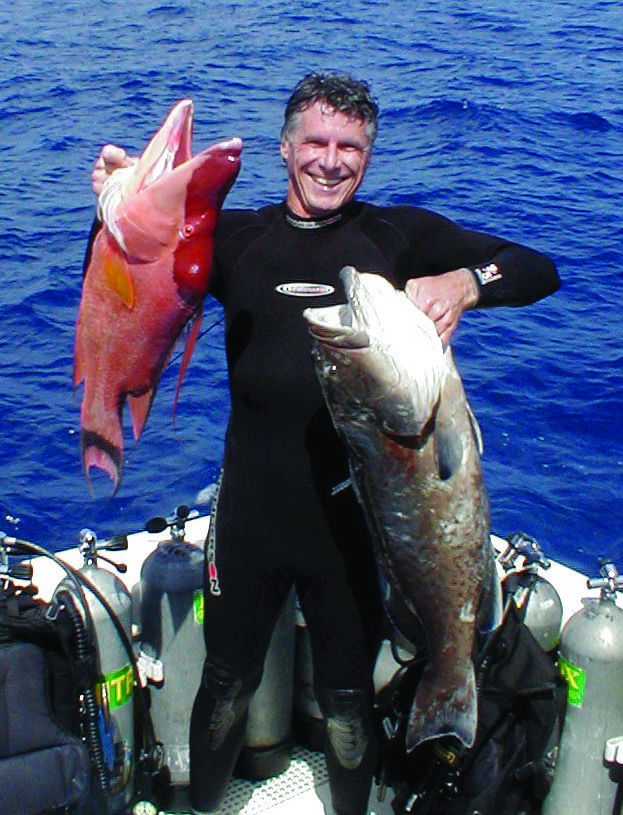Capt. Chad Carney
Finding fish is a never-ending focus for spearos. Sites everyone sees, like bridges & rock piles are usually fished out, as are close-in artificial reefs and published wrecks. Deeper than 132 ft and far offshore you’ll likely find more plentiful & bigger fish! Amazingly with today’s great GPS & bottom/fish finders, many boaters can’t locate big wrecks and reefs. Stop drawing daisies and work a tight grid resembling a parking lot around the number. Keep looking for any structure/fish & mark your screen. We always drive & watch – everywhere and find new spots with short bounce dives. Get a marker jug and 4lb weight with enough extra line to hold the location, even in poor visibility. I’ve found many small potholes & rock piles loaded with fish and nobody else has ever fished them.

Scouting is as important today as it was before the cool electronic gadgetry because divers need to not hammer just a few sites. We often dive sites run over in the past, but not dove. It’s surprising how good sites can be that don’t look like much. Search old numbers too, like broken down shrimper wrecks; grouper and snapper love’em!
The Gulf has few pretty wrecks, because they blew the hell out of them, breaking hulls up fast. Ugly dives produce fish! I followed a big gag swimming due south off the D4 Boxcars off Bradenton in 1999. He led me about 40 yards to an unmarked pile of boxcars, where I shot him and multiple mangroves. A year later my buddy shot a 39# PB gag! One wreck lost its superstructure in a storm in 1993, so I swam all around the hull and found it 150’ SW and teaming with gags. A shark fin was cutting the surface off Ft. Myers far away from everything; Sharky’s Ledge was jam packed with all species!
Many deep reefs are for anglers, but hooked fish often hole-up and shed tackle. Deep dive sites require technical training, gear and experience, but they’re worth the cost and effort!
Captain Chad Carney – Diving Instructor & Journalist
mobile: 727-423-7775
e-mail: chad.carney@yahoo.com
